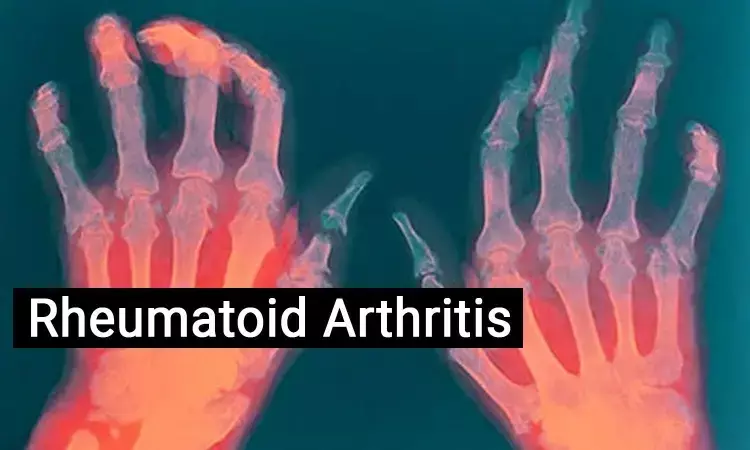- Home
- Medical news & Guidelines
- Anesthesiology
- Cardiology and CTVS
- Critical Care
- Dentistry
- Dermatology
- Diabetes and Endocrinology
- ENT
- Gastroenterology
- Medicine
- Nephrology
- Neurology
- Obstretics-Gynaecology
- Oncology
- Ophthalmology
- Orthopaedics
- Pediatrics-Neonatology
- Psychiatry
- Pulmonology
- Radiology
- Surgery
- Urology
- Laboratory Medicine
- Diet
- Nursing
- Paramedical
- Physiotherapy
- Health news
- Fact Check
- Bone Health Fact Check
- Brain Health Fact Check
- Cancer Related Fact Check
- Child Care Fact Check
- Dental and oral health fact check
- Diabetes and metabolic health fact check
- Diet and Nutrition Fact Check
- Eye and ENT Care Fact Check
- Fitness fact check
- Gut health fact check
- Heart health fact check
- Kidney health fact check
- Medical education fact check
- Men's health fact check
- Respiratory fact check
- Skin and hair care fact check
- Vaccine and Immunization fact check
- Women's health fact check
- AYUSH
- State News
- Andaman and Nicobar Islands
- Andhra Pradesh
- Arunachal Pradesh
- Assam
- Bihar
- Chandigarh
- Chattisgarh
- Dadra and Nagar Haveli
- Daman and Diu
- Delhi
- Goa
- Gujarat
- Haryana
- Himachal Pradesh
- Jammu & Kashmir
- Jharkhand
- Karnataka
- Kerala
- Ladakh
- Lakshadweep
- Madhya Pradesh
- Maharashtra
- Manipur
- Meghalaya
- Mizoram
- Nagaland
- Odisha
- Puducherry
- Punjab
- Rajasthan
- Sikkim
- Tamil Nadu
- Telangana
- Tripura
- Uttar Pradesh
- Uttrakhand
- West Bengal
- Medical Education
- Industry
Etanercept significantly slows radiographic progression of psoriatic and rheumatoid arthritis: PRERA Trial

GERMANY: According to research that was recently published in the journal, Rheumatology and Therapy, mean radiographic progression in patients with rheumatoid arthritis (RA) and psoriatic arthritis (PsA) was relatively low and the proportion of individuals without any progression was significantly greater among those treated with etanercept (ETN) when compared to the pre-ETN period.
Psoriatic arthritis (PsA) and rheumatoid arthritis (RA) are two conditions in which inflammation can result in joint damage. Radiographic progression is the ability of X-ray images to demonstrate if the disease worsens. Etanercept is a drug that affects the immune system of the body and can lessen joint inflammation.
The so-called silent progressors-radiographic changes that persist long after a patient achieves clinical remission-may occur in individuals taking conventional synthetic disease-modifying antirheumatic medications (csDMARDs), according to research findings.
In patients with RA or PsA receiving ETN for up to 36 months in outpatient care in Germany, the study evaluated radiographic progression.
The first prospective, non-interventional, multicenter study conducted in the real world was called the Prospective Evaluation of The RAdiographic Efficacy of Etanercept in Patients with Rheumatoid Arthritis or Psoriatic Arthritis (PRERA) experiment. The study's two phases involved up to 10 outpatient visits for eligible participants (phase 1: 7 visits every 3 months between baseline to month 18; phase 2: 3 visits every 6 months between month 18 and month 36). Phase 2 enrollment was not required. At baseline (Rx1), months 12–18 (Rx2), and months 30-36 (Rx3), radiographs of the hands and feet were taken. Pre-baseline radiographs (Rx0) from the past, if any were available, were also evaluated. Any changes in the modified total Sharp score (absolute and annualized) were the main result (mTSS). Changes in the disease activity score in 28 joints (DAS28), the joint space narrowing score (JSN), and the erosion score (ES) were additional outcomes. There were recorded adverse events (AEs) as well as serious adverse events (SAEs).
1378 of the 1821 study participants had RA diagnoses, while 440 received PsA diagnoses. Nearly 50 percent of patients finished phase 1. A total of 36% of patients with RA and 39% of individuals with PsA stopped taking ETN medication before the study's conclusion due to lack of improvement.
Key findings of the trial:
- individuals (RA: n = 511; PsA: n = 167) who had access to Rx1 and Rx2 information, mean mTSS was steady, and the annualized median change in mTSS was 0.
- Annualized radiographic progression in mTSS, JSN, and ES was higher before therapy with ETN than during treatment for both groups of patients with Rx0, Rx1, and Rx2 (RA: 180; PsA: 47).
- compared to pre-ETN, the proportion of patients with radiographic non-progression increased during the ETN therapy period.
- Patient-reported outcomes and clinical disease activity both improved.
- From the beginning of phase 2 through the end, both groups' mean DAS28 declined.
- Both patients with RA (6–62%) and PsA (10–65%) had a progressively rising percentage of patients in DAS28 remission from baseline.
- Mean Hannover Functional Ability Questionnaire (FFbH) scores surged for both groups from baseline to month 18 and was steady during phase 2.
Researchers concluded that majority of patients who had radiographic data were treated with ETN for up to 3 years without radiographic progression.
Additionally, along the course of the ETN treatment, "decreased disease activity, enhanced functional remission, and improvements in patients' quality of life (QoL) were noted."
Reference:
Wassenberg S, Rau R, Klopsch T, et al. Etanercept is Effective and Halts Radiographic Progression in Rheumatoid Arthritis and Psoriatic Arthritis: Final Results from a German Non-interventional Study (PRERA) [published online ahead of print, 2022 Oct 17]. Rheumatol Ther. 2022;10.1007/s40744-022-00491-4. doi:10.1007/s40744-022-00491-4
Dr Kamal Kant Kohli-MBBS, DTCD- a chest specialist with more than 30 years of practice and a flair for writing clinical articles, Dr Kamal Kant Kohli joined Medical Dialogues as a Chief Editor of Medical News. Besides writing articles, as an editor, he proofreads and verifies all the medical content published on Medical Dialogues including those coming from journals, studies,medical conferences,guidelines etc. Email: drkohli@medicaldialogues.in. Contact no. 011-43720751


